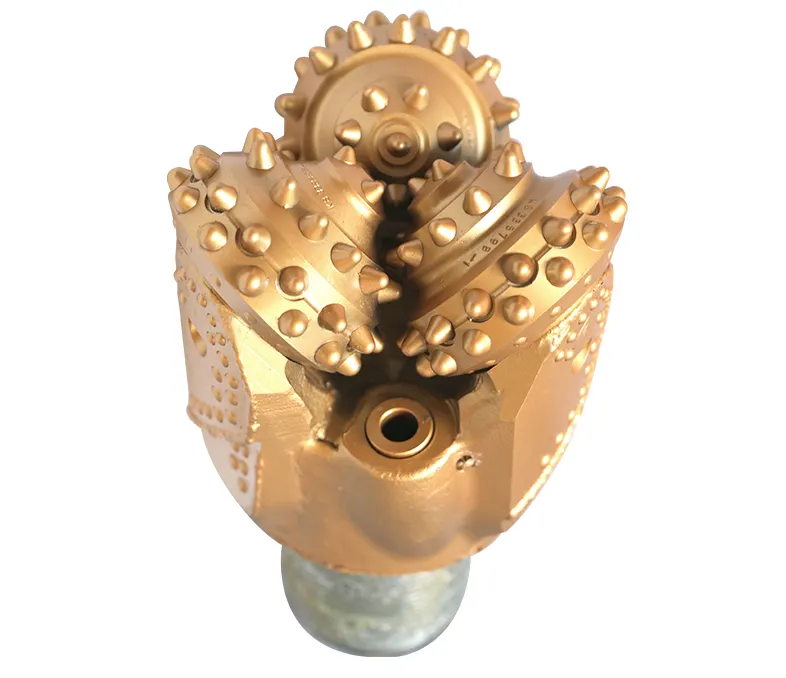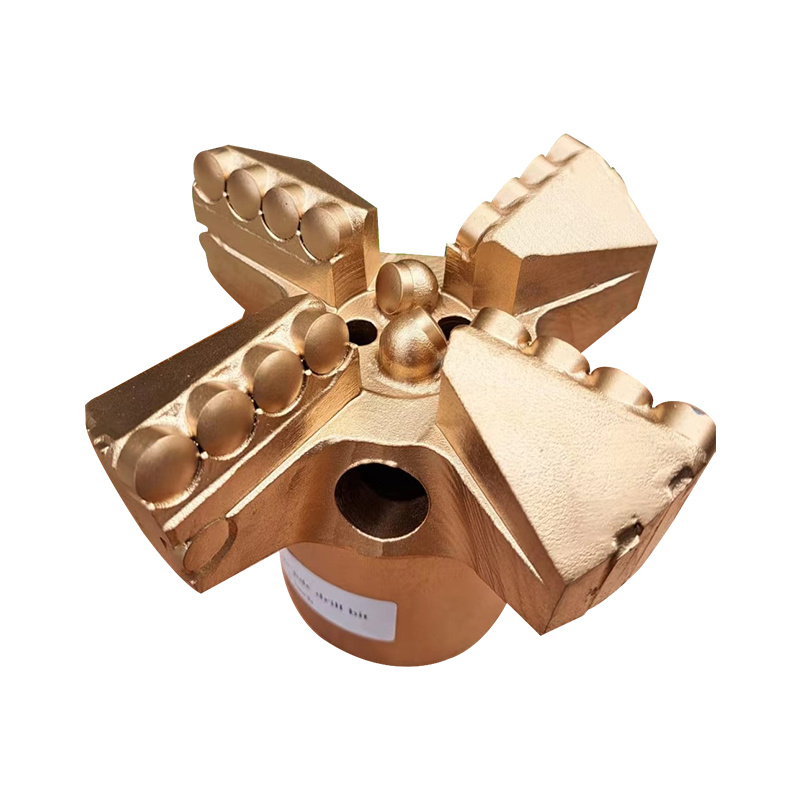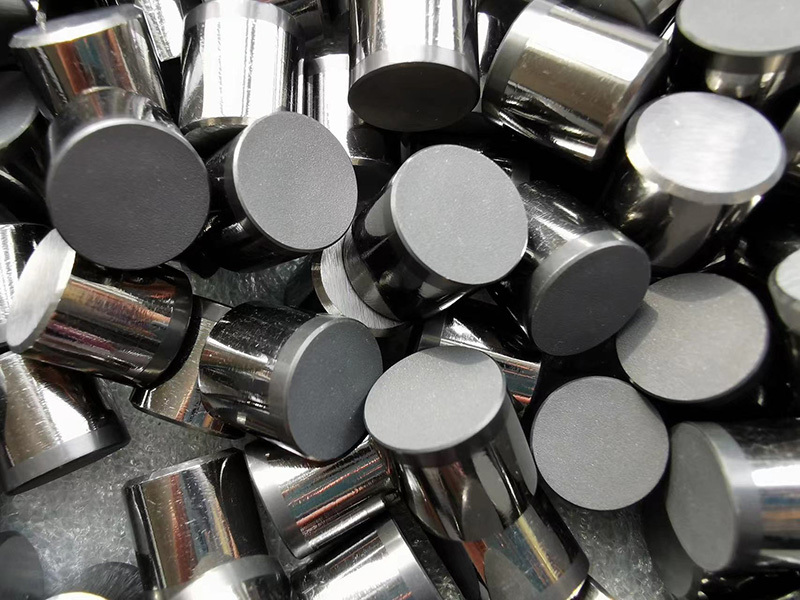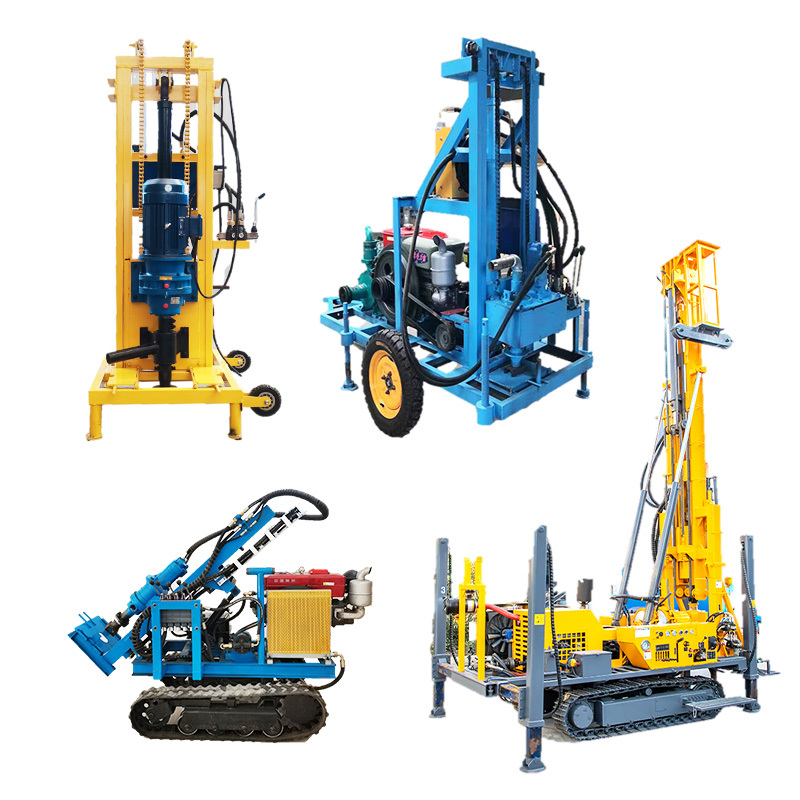Roller vs Journal Bearings: What's the Difference in Tricone Bits?
Jun 03,2025

Within the rugged heart of a tricone drill bit, the bearing system is its critical lifeblood. Enduring immense weight, violent shocks, and high-speed rotation, these bearings directly dictate bit longevity and drilling efficiency. Roller bearings and journal bearings (sliding bearings) represent the two dominant solutions, each with fundamentally distinct designs and operating principles.
1. Structural Design: Complexity vs. Simplicity
- Roller Bearings: Feature a relatively complex, precision design. Core components include an inner race (fixed to the cone shaft), an outer race (fixed in the bit leg), rolling elements (balls or rollers), and a cage (to separate the elements). Like trains on tracks, the elements roll between the races to enable movement.
- Journal Bearings: Offer significantly simpler construction. They consist primarily of a journal (part of the cone shaft) and a bushing (fitted within the cone bore). These surfaces contact directly, forming a sliding friction pair. Design focuses on robust lubrication spaces and wear-resistant surfaces. Companies like SUNGOOD TECH continuously innovate in developing bushing materials with superior wear resistance and anti-galling properties.
2. Working Principle: Rolling vs. Sliding Friction
- Roller Bearings: Convert sliding friction into rolling friction. Contact between the rolling elements and races is point or line contact. Under ideal lubrication, friction coefficients are very low (typically 0.001-0.005), minimizing energy loss and startup resistance – akin to rolling a load versus dragging it.
- Journal Bearings: Operate on sliding friction. The journal and bushing surfaces have large-area contact (surface contact). Friction heavily depends on lubrication:
- Ideal State (Hydrodynamic Lubrication): At high speeds, oil forms a pressurized film separating the metal surfaces, achieving low friction (0.001-0.008).
- Real-World Challenge (Boundary/Mixed Lubrication): Under the low speeds, extreme loads, shocks, high temperatures, and poor lubrication common in drilling, maintaining a full film is difficult. Metal asperities contact, leading to boundary lubrication (friction coefficients ~0.05-0.15) or even dry friction, accelerating wear dramatically.
- Ideal State (Hydrodynamic Lubrication): At high speeds, oil forms a pressurized film separating the metal surfaces, achieving low friction (0.001-0.008).
3. Performance: Trade-offs in Capability
- Roller Bearings:
- Advantages: Lower friction, higher efficiency, less heat generation; responsive startup; less speed-sensitive; smaller axial size.
- Limitations: Relatively weaker tolerance for shock loads (risk of spalling/pitting); highly sensitive to contaminants (abrasives cause brinelling/failure); more complex/costly to manufacture; potential noise/vibration at high speeds.
- Advantages: Lower friction, higher efficiency, less heat generation; responsive startup; less speed-sensitive; smaller axial size.
- Journal Bearings:
- Advantages: Exceptional load/impact capacity (surface contact excels in hard/abrasive formations like quartz sandstone or gravel); excellent vibration damping; smoother running; higher contaminant tolerance (small particles embed less critically); simpler construction/lower cost.
- Limitations: Higher friction, especially at startup/low speeds/poor lubrication (increased power consumption/heat); critically dependent on consistent, clean, ample lubrication; higher startup friction; wear increases irreparable clearance, often requiring full cone replacement.
- Advantages: Exceptional load/impact capacity (surface contact excels in hard/abrasive formations like quartz sandstone or gravel); excellent vibration damping; smoother running; higher contaminant tolerance (small particles embed less critically); simpler construction/lower cost.
4. Material Selection: Hardness vs. Composites
- Roller Bearings: Races and elements use high-carbon chromium steel (e.g., GCr15) or superior carburizing steels, demanding extreme hardness, contact fatigue strength, wear resistance, and dimensional stability.
- Journal Bearings: Employ friction-reducing material pairs. Journals are hard alloy steel (carburized/hardened). The bushing is critical: Common materials include:
- Copper Alloys: Tin bronze, aluminum bronze (good wear/heat resistance, anti-seizure).
- Powder Metallurgy (P/M): Oil-impregnated copper/iron-based P/M (self-lubricating).
- Special Composites: Metal-matrix composites embedding solid lubricants (graphite, MoS₂). SUNGOOD TECH focuses R&D on such advanced materials to enhance reliability under boundary lubrication.
- Copper Alloys: Tin bronze, aluminum bronze (good wear/heat resistance, anti-seizure).
5. Tricone Bit Application Scenarios
- Roller Bearings: Often preferred for soft to medium-hard formations. Their efficiency and lower heat suit these less severe conditions, maximizing Rate of Penetration (ROP).
- Journal Bearings: The go-to choice for hard/abrasive formations, extreme shock loads, and challenging drilling environments due to superior durability and load capacity. While slightly less efficient, their reliability under extreme duress is paramount. Many high-performance hard-rock tricone bits use full journal bearings or hybrid designs (e.g., roller/journal combos).
6. Maintenance & Life
- Roller Bearings: Failures are often sudden (spalling, fracture). Require sophisticated sealing/lubrication systems. Higher maintenance demands.
- Journal Bearings: Wear is typically gradual. Long life with good lubrication, but rapid failure if lubrication fails. Simpler maintenance, but worn components often necessitate costly cone replacement.
Conclusion: The Right Choice Depends on the Job
The core distinction between roller and journal bearings in tricone bits stems from their fundamental friction mechanism (rolling vs. sliding) and contact type (point/line vs. surface). This dictates their key performance attributes – load handling, efficiency, shock resistance, and sensitivity.
- Prioritizing high ROP and efficiency in relatively mild conditions? Roller bearings may be optimal.
- Facing extreme loads, impact, and hard/abrasive formations? Journal bearings provide the robustness and reliability needed to power through.
Selecting the right bearing type, based on precise geology and drilling parameters, is key to maximizing tricone bit performance and minimizing overall drilling costs. Continuous advancements in materials science and lubrication technology, driven by innovators like SUNGOOD TECH, are constantly enhancing both bearing types, enabling drilling to reach deeper and more challenging reserves.
Related News
Contact Us













